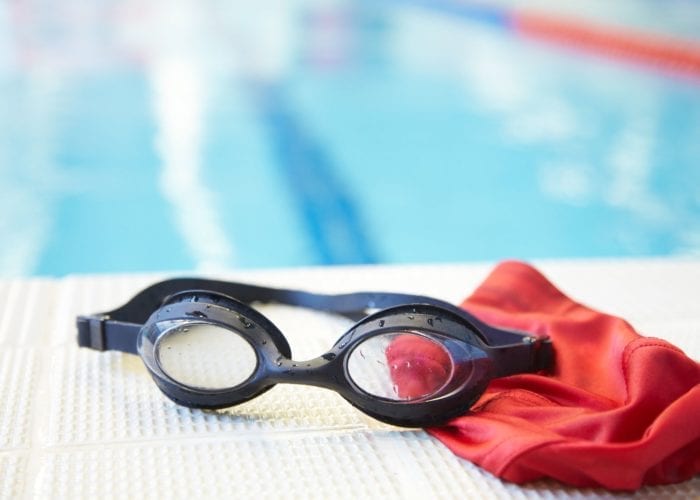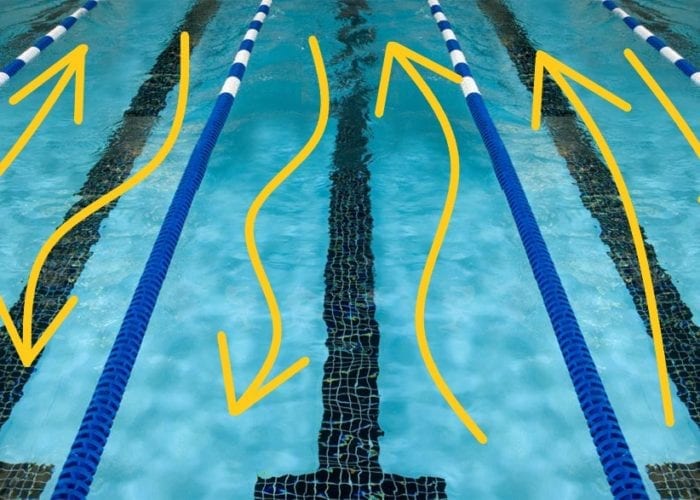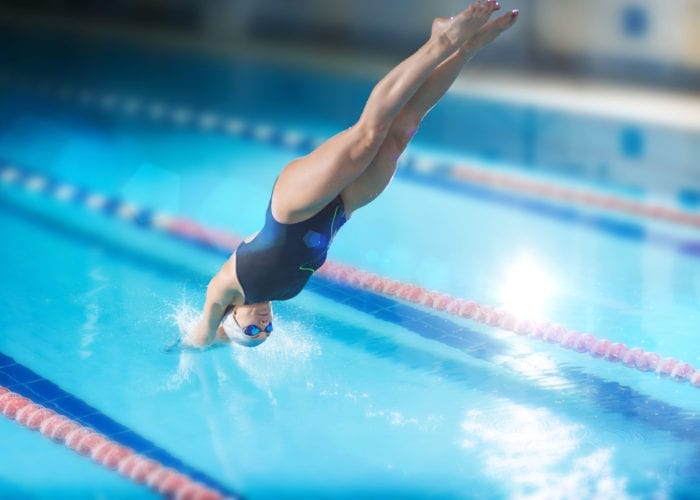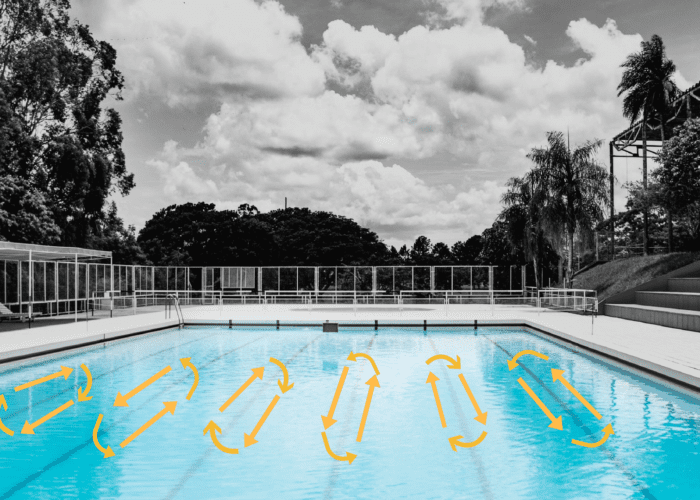How to properly train in the swimming lane to avoid slowing down other swimmers or vice versa? This is what we will look at in this article. These rules are mostly known to swimmers, less among fitness athletes and beginner swimmers, and almost the majority of the public do not know these rules at all.
If there is no sign on the swimming pool deck with a description of swimming in the lane (fast, slow etc.) and the direction of circling, by reading and sharing this article, you will expand your horizons and help improve awareness about swimming training. You will immediately become better lane mate. Read also how to behave thoughtfully in the public pool area.
Rule 1
Before diving into the pool lane, make sure there is no team training or rented course. Before you dive into the lane, let the swimmers know you’re going to join. Never start swimming in a busy lane if there is a free lane available.
Awareness about the number of swimmers in the lane must be clear to everyone on the lane. Before you join, stay in the corner, leave your feet in the water or sit on the edge of the pool so swimmers can register you. Then let go the faster swimmers in front of you and start swimming. Do not start swimming right in front of an athlete.
If you are a fast swimmer and only a slow lane is free, of course, you join a lane where there are fewer people, but it corresponds to your swim speed. Everything depends on how the lanes are marked by a swimming pool.
Rule 2
Always start circle swim automatically, right-to-left or vice versa. You can divide the track in half and swim in your own direction only if you are two people in the lane and you will strictly agree together on that.
To allow other swimmers to join the lane, you have to watch when it will happen. When you see that some athletes are about to join, switch to the “circle swim” mode as fast as possible and select the right direction. If there are signs indicating the direction of swimming, follow them.
If you see that it in the lane on the right they circle swim in the right to the left direction and you are about to swim in an empty lane next to it, you should correctly choose the opposite direction, from left to right. It’s about the safety of all swimmers.
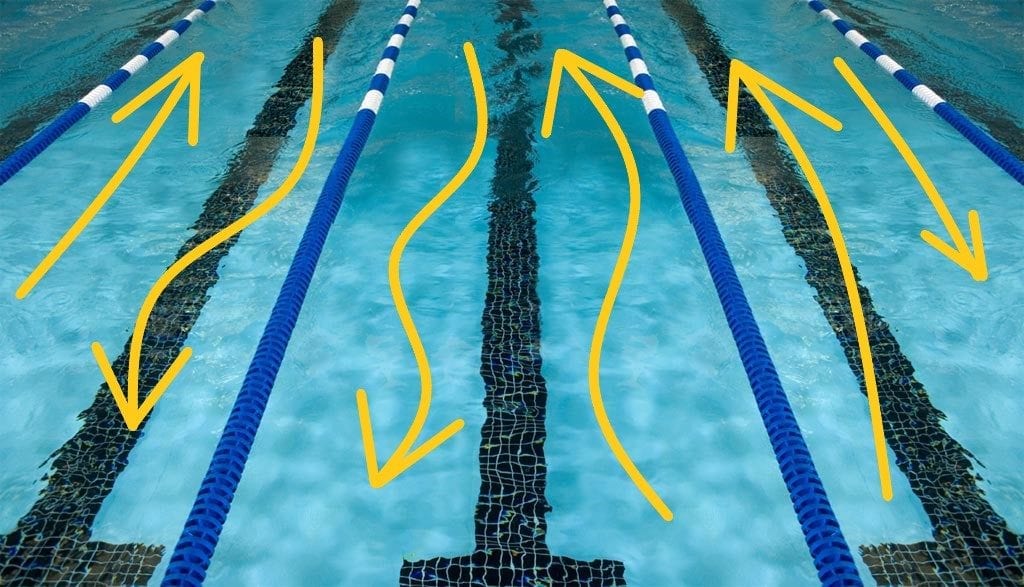
Rule 3
IMPORTANT: Never dive or push from the wall before the faster swimmer approaching the wall. Always first let go a fast swimmer ahead of you, let him take a little gap, then start swimming. Don’t swim glued on somebody’s legs.
Rule 4
If you need to overtake a slower swimmer, let him/her know by a gentle tap on the heel, ankle or foot (never touch or pull their feet repeatedly).
The slower swimmer does not accelerate, but swim as close as possible to the lane rope and continues to swim into the closest corner where he/she let a faster swimmer overtake.
If someone taps you on the ankle, you know that it’s not necessary to freak out (as some individuals can do), but only swim close to the side and let the swimmer overtake over you.
Rule 5
Never rest and finish in the middle of the wall! Leave the middle free for swimmers who continue their lap. However, the thougthfull behavior of fast swimmers is needed, when you see that someone is still standing in front of the wall below the block, it does not mean that you do a flip turn from one’s back, but first try to explain them, that they should not stand in the middle of the lane.
Rest in the corners of the lane! Before you go on your lap, let faster swimmers go in front of you. Do not stand or sit on the lane ropes, you can damage the attachments in the wall or break the cable. If there is a lot of swimmers resting at the corner of the lane, stay at the on the side and gently hold the lane with your hands without hanging on it.
Rule 6
Do not start swimming right behind the swimmer before you. If the swimmer does not know about you, he/she can crash into you after the turn. There are unnecessary accidents and injuries because of that.
Rule 7
If everyone swims in the lane Crawl or Backstroke (long-axis strokes) you can not swim Butterfly or Breaststroke (short-axis strokes). Maybe you’ve ever tried to overtake a slow breastroker and his leg kick was super wide, so you got hit to the head or body by his/her legs. Not a pleasant experience.
If you recognize that there are experienced swimmers in the lane and you want to swim a Butterfly, you can, but only if you use one arm when the swimmer in the opposite direction approaching to you so your arm will not reach hands on his/her half.
Rule 8
Communicate. Be considerate. Say hi to other swimmers. Agree on, when you need to start swimming. Tell them how much you have a resting time or whether you have a slow lap, then let go of a faster swimmer in front of you.
Be cool and talk to each other and give or take some advice. Keeping this swimming etiquette will make it easier to train, you will be happier and the system will work. Beware, that most lifeguards don’t know these rules and most pools don’t have them posted.
